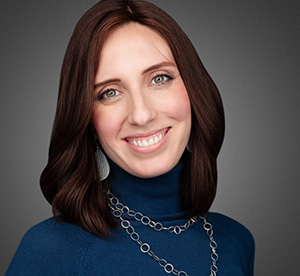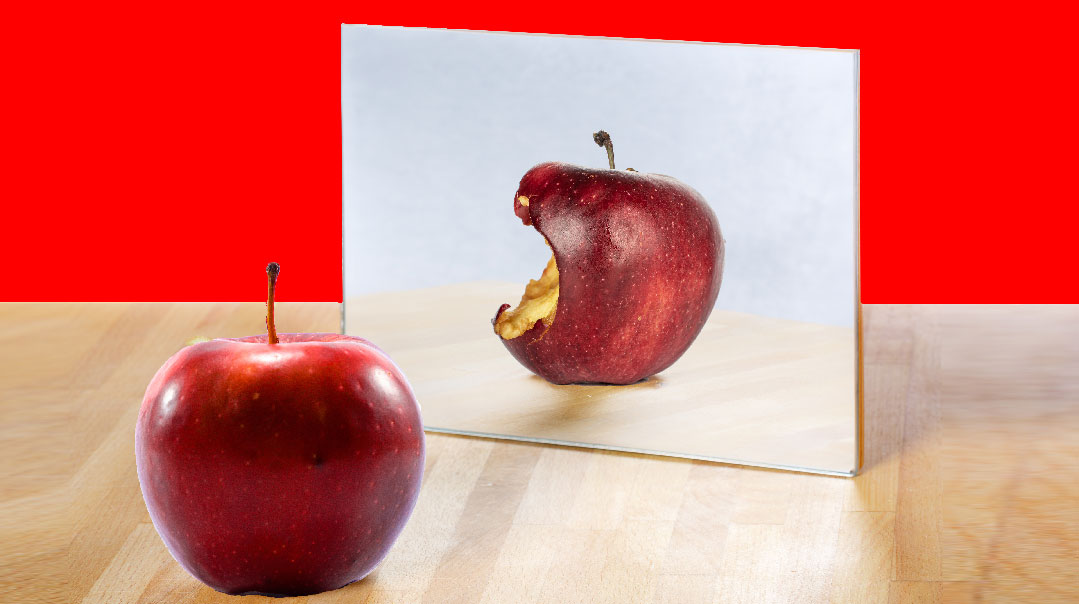The Masks We Wear


Purim is a day when we’re open about the masks we’re wearing, disguising ourselves in costumes, wigs, and face paint. But once the Yom Tov is over, we remove all the makeup and themed getups and slip on the psychological masks that we’ve been wearing most of our lives.
What we refer to as a “mask” is a well-established concept in the foundations of psychology. Carl Jung referred to it as the “persona,” which is Latin for mask. He was referring to the social masks we wear based on how we want the world to perceive us, such as a competent, intelligent, organized, “with it,” or frum person.
When someone describes a person as “wearing a mask,” the connotation is usually negative, but there are appropriate times and legitimate reasons for donning a mask.
Keep the Mask
You’re in the break room at work, and your boss comes in and starts telling you about his shalom bayis issues. How do you feel? Awkward? Uncomfortable? Don’t worry, that’s the right answer.
Professional masks are appropriate and healthy. We expect doctors, lawyers, teachers, and our car mechanics to behave in a certain way. If your cardiologist broke out in song because he’s a closet opera singer, you would not appreciate his true expression of self. A certain distance is expected.
Sara Eisemann, a social worker and Family First columnist, uses the word “containment” to describe the natural and healthy inhibition we experience when interacting with strangers, acquaintances, and the like. “Let’s be honest,” she says. “How would it go down if, on a first date, a boy was to ask a girl about seminary and she would put her hand up and say, ‘Stop! Before we waste any of each other’s time, I need you to know that all those things my friends on my résumé said about me are only partially true. I don’t do chesed all the time. Sometimes I’m actually annoyed when people ask me for help, and to be honest, I prefer to do favors for people who are neat and clean and fun.’
“A facade,” Sara continues, “acts as a filter of sorts in the early stages of a relationship. It represents what we value, as well as the best version of ourselves. A person may value chesed and selfless giving, and the best version of her would engage in selfless giving all the time. The real individual, however, is more complex. But would you ever get to that if we spilled the good, the bad, and the ugly before the relationship evolved?”
Masks are also helpful in social settings. We often wear them to facilitate conversation. Think small talk — nobody really cares for it, but it makes conversation flow enough that we can find the people we connect to and move on to a deeper conversation. Consider when you see someone in passing, and they ask how you’re doing, and you answer “fine,” when you’re actually having a miserable day.
In public, it’s often easier to be unobtrusive in conversation and nod our heads when someone in the grocery store makes a comment about the price of eggs these days, and you really couldn’t care less. In these types of exchanges, a mask is expected; speaking up authentically might even create an awkward social situation.
A mask can serve as a protective measure, like when you put up a brave front and say “baruch Hashem” even when you’re not coping, but this is not the person, time, or place to talk about it. At events where we feel insecure or uncomfortable, wearing a mask can keep us from getting stung.
Sometimes we put on masks not for our benefit but for others. People who are reserved may don a persona of gregariousness when hosting a simchah in order to makes their guests more comfortable. There are times we mask our own greatness to put others at ease, like not talking about the chesed we do when someone says she can’t find the time to cook a meal for Neshei. And when we come home exhausted and grumpy, we try to put on a chirpy face for our husband’s or children’s sake.
Aspirational behavior can also present itself in the form of a mask. “We can use the yetzer hara’s tool of deception in a beautiful way to capture something that is not yet truthful on all levels, but we want it to be,” says Shuli Fuchs, a high school mechaneches and kallah teacher.
She shares a personal example: “It’s easier to live up to standards when we are in a role model position and certain behaviors are part of the package. When I find myself losing patience with my kids, I try to imagine what I would do if my students were visiting. I utilize the tool of a mask to activate my better self — this is who I want to be, this is my standard, and when no one else is around, this is how I can tap into it.”
The Underside of Masks
You may have been taught the song, “The mask on your face shows never a trace, of what’s going on inside….” A mask can be so chillingly effective at projecting a false image, that we can be lured in by its seduction. But there’s a cost to hiding our true selves.
“At its core, a mask is a defense mechanism against a fear of rejection and ultimate abandonment,” says Sara. “We fear that if people know who we really are, they’ll reject us, or worse, leave us.” This causes people to act unauthentically and betray who they are in order be liked and accepted. But what people are liking and accepting is not who a person really is, which leads to a sense of self-betrayal and dissonance within an individual.
Debby felt that sense of internal discord when she was three years out of high school and working on a school production for a local high school. It was a small school, and she worked hand in hand with the principal, spending many hours with her. After one such marathon session, the principal requested that since Debby was a role model for the girls, could she please not wear the then-new style of a long-sleeved shell under a sweater with short sleeves, as the school just lectured the students about it.
“I still kick myself for my response,” says Debby, who smiled graciously to the principal and replied, “I’m out of high school three years and I haven’t heard mussar in long time — thank you so much for raising my awareness and sensitivity.”
For Debby, the need to be perceived as a positive role model superseded her authenticity — this style was totally tzniyus by her personal standard, and she was not going to throw out her perfectly good clothing. “I could’ve just said, ‘Sure, not a problem,’ but my need to impress and present a certain way was too strong.” And when Debby met the principal after production while wearing a shell and short-sleeved sweater, she felt the “ick” in her inconsistency.
“When we behave in ways that are in line with our core values, we tend to feel good about those interactions. When we don a mask inconsistent with our values, we feel discomfort with ourselves,” explains psychologist Dr. Shoshana Friedman. Debby is exhibit A for that.
Most of us wear masks that are fairly transparent and are easily removed when we feel comfortable. But some of us don disguises that are impenetrably opaque, and that’s where the most danger lies.
Dr. Friedman shares a story of a client, we’ll call Adina, who came in saying, “I have no idea why I’m here. I’m just not happy. Not happy with myself, not happy with my marriage. I know my husband is a great guy, and he’ll do anything for me, but I’m miserable.”
After a few sessions, it became clear that Adina was still reeling from the expectations her family had imposed on her throughout her childhood. “There was an expectation that she’d dress in the right designer clothing, marry the right kind of guy, and be pretty. It was really all about presentation,” says Dr. Friedman.
In therapy, Adina shared a few distinct memories from her early childhood of times that she had acted out in a minor way; the reaction from her family was so overwhelmingly strong that Adina quickly learned that to gain love and acceptance in her home, she needed to always be on her best behavior. She married a wonderful man but did not have the language to communicate when she was angry or disappointed. “She was conditioned to just smile and be pretty, that’s it,” says Dr. Friedman. “She had gotten so used to donning the mask for approval, that she couldn’t access herself.” Dr. Friedman tacks on a sad afterthought: “This is a fairly common story.”
For those thinking this is extreme and doesn’t apply to them, Dr. Friedman shares a more relatable version of a client telling her about her experience shopping with her children for Yom Tov clothing. “I don’t even know what I like anymore,” her client said, “I know what I’m supposed to like, I know what’s in style, but I don’t know what I like.”
Testing Your Masks
How can we tell if the mask we’re wearing is healthy or harmful? Sara suggests paying close attention to your fear factor: If you’re thinking “what if people saw/knew?” that’s a sign that whatever you’re doing is not for yourself, but for others. Sara gives an example: If you like a neat and orderly house because it gives you a sense of calm and control, that’s wonderful, but if you’re scared to answer the door because “how can the house be seen in such a state,” that’s heading into dangerous façade territory.
What do we lose by playing these mask games? We lose each other. Our generation has a loneliness epidemic, partially because we’re too afraid to reach out and engage with one another on a real level. It’s always just recipes, kids’ clothes, the latest hock. Sometimes we may share something inspirational that we’ve heard, but how many times do we really share why it resonated so deeply — the whole reason, not the just part that makes us sound good?
Faigy is a mother of four already, but she still admits to wearing a mask around her mother-in-law. “When I talk to her, I pretend to be holier than I am. I mouth the words I know she wants to hear — I hardly ever share my real opinion. I just want her to think that her son got someone worthy.”
How familiar is that story? And how many times have you heard the converse? Shayna, a mother with three married children, admits that it took almost a year after her son was married before she allowed herself to come downstairs in a snood when her daughter-in-law and son visited. We’re so busy impressing and posing that we lose opportunities for connections and relationships that are cornerstones of the human experience.
Rebecca Skaist, a 12th grade mechaneches and long-time kallah teacher, once met with a former student who was having a rocky start to her marriage. When she chatted with the woman again a few months later, things had vastly improved. “I like my husband so much better now,” the kallah told Rebecca. “In the beginning, we were so busy doing what we thought we were supposed to be doing, like me coming to the table fully dressed for formal dinners. Once we stopped acting and were ourselves, I found I really liked him.”
Particularly in relationships that should be close — like spouses, parents and children — when people play a role instead of sharing their vulnerabilities, imperfections, and true selves, they lose the core of the relationship and never develop a connection of substantial depth.
Aside from losing out on relationships with each other, we lose our relationship with our potential. Hashem created each of us with customized gifts and strengths, but if we’re so busy trying to be like everyone else, looking over our shoulder making sure we’re still in line with the rest of the world, we can’t fulfill our unique tafkid. Our hearts mourn that loss without the mind knowing where we went wrong.
V’nahafoch Hu
It’s easy to raise issues, harder to solve them. Research points to a clear way out of misusing masks, but it’s not a simple path — it requires embracing authenticity.
Being authentic means accepting and being all parts of yourself, whether it’s in the box, out of the box, or doesn’t know where the box is. For Family Table writer Chaia Frishman, that means pursuing unique hobbies like studying comedy, for others, eschewing dresses because they feel lumpy in them, even though they’re in style. As naturally social creatures, we crave “belonging” so much that we often betray ourselves just to fit “in the box.”
In her book The Gifts of Imperfection, social worker Brene Brown explains fitting in as, “The greatest barrier to belonging.” Sara elaborates: “We all have images that we like to portray that support our group’s values. Whether it’s the balabatish baal simchah who throws a lavish wedding he can’t afford or a yeshivish family who deny that their son can’t learn, every group exerts certain pressures that people feel they need to live up to.”
But by betraying our real needs and desires in order fit in, we’re left “hustling for self-worth,” as Brene writes. Belonging at its core has self-acceptance and presenting oneself as you are, warts and all. It doesn’t mean you don’t strive for improvement, but your motivation is internal as opposed to external.
Sadly, as a society, we only pay lip service to the beauty of the individual, which makes the struggle for authenticity more challenging. Rebecca points out that in birchos hashachar, we say “sheasa li kol tzarki,” Hashem has given me everything I need. The other brachos are more general, like malbish arumin, thanking Hashem for all of the collective Jewish people’s clothing. “When we stress and appreciate our unique abilities and our package and realize this is what Hashem tailor-made for us, we’re less likely to look at other people for acceptance and approval,” says Rebecca.
After donning a mask for so many years, there can be pushback when we try to take it off. People are used to things following a certain script, and when someone has been following the script for years and then breaks it, it can be difficult for those around to accept the new norm.
Toby shares the time her son ominously said, “I need to tell you something, Ma.” She was driving at the time and asked him if she had to pull over; he replied “yes.” The confession? Her son shared that while he believes Torah is the source, he doesn’t think he’s suited for long-term learning. “What hurt the most was not what he said, but his fear of what I and others would say,” Toby admits.
After consulting with his rosh yeshivah, Toby’s son is now in college, pre-med. He is a solid ben Torah, but is not following the typical track in his community. “Shidduchim are starting for him, and it’s tough. People assume he’s a ‘type’ because he’s not in yeshivah.” There are comments, there are looks, there’s judgment, and there are moments of self-doubt, when Toby’s son wonders, “Is being me worth it?”
But despite the obstacles on the path towards authenticity, when the dust settles, you’ll find the people who are still there for you and with you, and you’ll be left with a sense of satisfaction and contentment that not even being the Joneses can compete with.
This Purim, do a real v’nahafoch hu, and take off the mask.
(Originally featured in Family First, Issue 634)
Oops! We could not locate your form.







